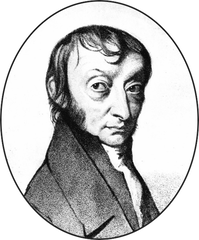I will discuss Freund-Rubin compactifications of tachyon-free superstring theories that have no spacetime supersymmetry in their ten-dimensional formulation. A common feature of these models is the presence of scalar potentials in the low-energy physics, known as tadpole potentials, which correspond to vacuum energies in quantum field theories.
These tadpole potentials can play crucial roles...
We compute the Sd partition function of the fixed point of non-abelian gauge theories in continuous d, using the ϵ-expansion around d = 4. We obtain the result up to NLO, i.e. including two-loop vacuum diagrams. Depending on the sign of the one-loop beta function, there is a fixed point with real gauge coupling in d > 4 or d < 4. In the first case, we extrapolate to d = 5 to test a recently...
We study correlators of a class of scalar toy models in cosmological background. These can be computed from the so-called wavefunction of the universe which in turn is given by the canonical form of the cosmological polytope. We find that a simple geometrical operation on the cosmological polytope gives a geometry whose canonical form gives the correlator. We initiate the study of its boundary...
Partial wave decomposition is one of the main tool within the S-matrix bootstrap. However, a comprehensive understanding of partial waves beyond four dimensions is currently lacking. We present a method to compute all partial waves for 2-to-2 scattering of spinning particles in arbitrary dimension.
Topological Recursion (TR) is the mathematical framework that governs the genus expansion of matrix integrals. In physics, TR has a wide range of applications: it computes correlation functions in matrix models, amplitudes in topological string theory, partition functions of JT (super)gravity and more. In this talk I will introduce the theory of Eynard-Orantin TR and outline the novel...
TTbar deformations provide remarkable insights into the topology and geometry of the space of field theories, as well as allowing exact calculations of physical quantities related to lower-dimensional deformed field theories. Noteworthy connections with theories of gravity have been shown to hold in two-dimensional spacetime. We discuss the extension of such correspondences to higher...
The AdS$_2$/CFT$_1$ correspondence plays a key role in the microscopical description of extremal black holes, AdS$_2$ being part of the geometry that appears in their near horizon limit in any dimension.
Another useful application of the AdS$_2$/CFT$_1$ correspondence is to the holographic description of superconformal line defects in higher dimensional CFTs. Geometrically, a sign that an...
Extended operators such as defects are of fundamental importance in conformal field theories, with applications both to high energy theory and to condensed matter systems at criticality. Recently, analytic bootstrap techniques have been successfully applied to investigate these objects.
In this talk, we will focus on the O(3) magnetic impurity, which at the fixed point is described by a...
I will present recent developments in the understanding of non-unitary multicriticality in two-dimensions based on JHEP 02 (2023) 046, JHEP 09 (2023) 052 and work in progress.
We study the non-unitary, PT symmetric deformations of the two-dimensional Tricritical Ising Model obtained by coupling its two spin Z2 odd operators to imaginary magnetic fields. We establish the presence of two...
I will present recent developments in the understanding of conformal field theories at finite temperature, based on hep-th/2306.12417.
When a (super) conformal field theory is placed on a non-trivial manifold, the (super) conformal symmetry is broken. However, it is still possible to derive broken Ward identities for these broken symmetries, which provide additional constraints on the...
We consider inflationary models with multiple spectator axions that couple to dark Abelian gauge sectors. We demonstrate a distinctive phenomenon that make this class of models attractive -- we show that separation of the gravitational wave peaks can occur, depending on the axion initial conditions and mass. This leads to a distinctive gravitational wave (GW) forest, whose observation would be...
It is a well-established fact that any conformal field theory with a gap in the twist spectrum must contain families of multi-twist operators, whose spectrum at large spin approaches that of generalized free theory. In this talk, we aim to discuss how the lightcone bootstrap can be applied to five- and six-point correlation functions in the comb channel to constrain the behavior of double- and...
We consider 1/2 BPS supersymmetric circular Wilson loops in four-dimensional N = 2 SU( N ) SYM theories with massless matter in a generic representation of the gauge group and a non-vanishing β-function (arxiv:2311.17692). Following Pestun's approach, we can employ localization to map these observables, evaluated on the four-sphere S^4, into a matrix model, provided that the one-loop...
Holographic complexity is supposed to capture the evolution of spacetime. In two-dimensional de Sitter (dS), volume complexity remains O(1) up to a critical time, after which it suddenly diverges. On the other hand, in (d>2)-dimensional dS, complexity becomes very large even before the critical time. In Jackiw-Teitelboim (JT) gravity, taking into account the dilaton, the same behavior is...
Supersymmetric and magnetically charged black holes in AdS4 are known to be holographically dual to 3d SCFTs compactified on a Riemann surface.
In the last decade, many observables have been computed on both sides and a remarkable matching has been achieved.
In field theory, the partition function is computed via localization, and it reduces to a matrix model whose eigenvalues, at large N,...
We study polarized inelastic electron-nucleon scattering at low momentum transfer in the Witten-Sakai-Sugimoto model of holographic QCD, focusing on resonance production contributions to the nucleon spin structure functions. Our analysis includes both spin $3/2$ and spin $1/2$ low-lying nucleon resonances with positive and negative parity. We determine, in turn, the helicity amplitudes for...

